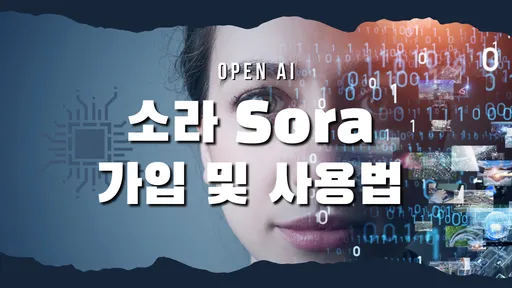ChatGPT를 사용하여 수동 소득을 창출하는 방법론은 몇 가지 주요 단계로 나눌 수 있습니다.
사용 사례 결정
첫 번째 단계는 구체적인 ChatGPT를 활용하려는 사용 사례. 이는 모델을 수집하고 교육하는 데 필요한 데이터 유형과 사용 사례를 구현하기 위해 구축해야 하는 사용자 인터페이스 또는 시스템 유형을 결정하므로 중요한 단계입니다.
예를 들어 고객 서비스용 챗봇을 만들려면 고객 서비스 상호 작용의 대규모 데이터 세트를 수집하고 해당 데이터에 대해 모델을 교육해야 합니다. 챗봇의 사용자 인터페이스는 고객이 질문을 입력하고 자동 응답을 받을 수 있는 간단한 텍스트 기반 인터페이스일 가능성이 높습니다.
반면 웹사이트나 소셜 콘텐츠를 생성하려는 경우 미디어를 사용하려면 관련 텍스트의 데이터 세트를 수집하고 해당 데이터에 대해 모델을 훈련해야 합니다. 이 사용 사례의 사용자 인터페이스는 사용자가 주제나 키워드를 입력할 수 있는 간단한 텍스트 편집기일 수 있으며 모델은 해당 입력을 기반으로 콘텐츠를 생성합니다.
모델 교육
사용 사례를 결정했으면 다음 단계는 관련 텍스트의 대규모 데이터 세트에서 모델을 교육하는 것입니다. 학습 데이터의 품질이 모델의 성능에 직접적인 영향을 미치기 때문에 이는 중요한 단계입니다.
모델 학습을 위한 몇 가지 옵션이 있습니다. 한 가지 옵션은 GPT-2 또는 GPT-3과 같은 사전 훈련된 모델을 사용하고 특정 데이터 세트에서 미세 조정하는 것입니다. 선행 학습된 모델을 미세 조정하면 모델의 이미 학습된 지식을 활용하고 특정 데이터 세트에서 좋은 결과를 빠르게 얻을 수 있습니다.
또 다른 옵션은 특정 데이터 세트에서 처음부터 모델을 학습시키는 것입니다. 이 작업은 시간이 많이 걸리고 더 큰 데이터 세트가 필요할 수 있지만 모델의 아키텍처를 더 잘 제어하고 특정 사용 사례에 맞게 미세 조정할 수 있습니다.
많은 프레임워크와 라이브러리가 있습니다. TensorFlow 및 Hugging Face의 Transformers 라이브러리와 같은 배포 모델에 사용할 수 있습니다. 이러한 프레임워크는 모델을 배포하고 API를 통해 액세스할 수 있는 도구를 제공합니다.
사용 사례 구현
모델을 배포한 후 마지막 단계는 사용 사례를 구현하는 것입니다. 사용자 인터페이스를 구축하거나 모델을 기존 시스템에 통합합니다. 이것은 고객이 모델과 상호 작용할 수 있는 방법을 제공하여 고객에게 유용하게 만드는 단계입니다.
이 작업은 Python 또는 자바스크립트. 예를 들어 챗봇을 구축하는 경우 고객이 질문을 입력하고 자동 응답을 받을 수 있는 간단한 텍스트 기반 사용자 인터페이스를 구축해야 합니다.
수익 창출 사용 사례
사용 사례가 구현되면 서비스 액세스에 대해 고객에게 비용을 청구하거나 사용자 인터페이스에 광고를 표시하여 수익을 창출할 수 있습니다. 이것은 모델 개발에 대한 투자 수익을 보기 시작하는 단계입니다.
예를 들어, 챗봇에 액세스하기 위해 월 구독료를 청구할 수 있습니다. 사용자 인터페이스에 광고를 표시하고 수익을 올릴 수 있습니다. 모델로 수익을 창출하는 방법에는 여러 가지가 있으며 구체적인 방법은 사용 사례와 대상 고객에 따라 다릅니다.
The methodology for making passive income using ChatGPT can be broken down into a few key steps:
Determine the use case
The first step is to determine the specific use case for which you want to utilize ChatGPT. This is an important step as it will determine the type of data you need to collect and train your model on, as well as the type of user interface or system you need to build to implement the use case.
For example, if you want to create a chatbot for customer service, you will need to collect a large dataset of customer service interactions and train your model on that data. The user interface for the chatbot will likely be a simple text-based interface where customers can type in their questions and receive automated responses.
On the other hand, if you want to generate content for a website or social media, you will need to collect a dataset of relevant text and train your model on that data. The user interface for this use case could be a simple text editor where users can input a topic or keyword and the model will generate content based on that input.
Train the model
Once you have determined the use case, the next step is to train the model on a large dataset of relevant text. This is a crucial step as the quality of the training data directly impacts the performance of the model.
There are a few different options for training a model. One option is to use a pre-trained model such as GPT-2 or GPT-3 and fine-tune it on your specific dataset. Fine-tuning a pre-trained model allows you to leverage the model's already learned knowledge and quickly achieve good results on your specific dataset.
Another option is to train your model from scratch on your specific dataset. This can be more time-consuming and may require a larger dataset, but it allows you to have more control over the model's architecture and fine-tune it to your specific use case.
Deploy the model
Once the model is trained, it can be deployed on a server or in the cloud for use in production. This step involves making the model accessible via an API or web service so that it can be integrated into an existing system or used to build a user interface.
There are a number of frameworks and libraries available for deploying models, such as TensorFlow and Hugging Face's Transformers library. These frameworks provide tools for deploying the model and making it accessible via an API.
Implement the use case
After deploying the model, the final step is to implement the use case by building a user interface or integrating the model into an existing system. This is the step where you take the model and make it useful to your customers by providing a way for them to interact with it.
This can be done using a programming language such as Python or JavaScript. For example, if you are building a chatbot, you would need to build a simple text-based user interface where customers can type in their questions and receive automated responses.
Monetize the use case
Once the use case is implemented, you can monetize it by charging customers for access to the service or by displaying ads on the user interface. This is the step where you start to see a return on your investment in the development of the model.
For example, you could charge a monthly subscription fee for access to the chatbot, or you could display ads on the user interface and earn revenue that way. There are many ways to monetize a model, and the specific method will depend on the use case and the target audience.
Features
제품 및 서비스 추천
•
이제는 5일배송! 해외직구 이제 아무나 한다 - 알리익스프레스로 최저가로 쇼핑하자!
•
•
•
도메인 저렴하게 구매하기 - 호스팅어 가입하기
•
쇼핑하고 캐시백을 현금으로 받기(알리익스프레스 사용하시면 무조건 가입) - 샵백 가입하기
•
아이폰이 처음이라면 - 아이폰 13미니
•
맥북 한번 사봐? 그렇다면 - 맥북에어 M1 기본형
•
아이패드 병을 고치는 유일한 방법 - 아이패드프로 11인치 M2 128GB Wi-Fi
•
Apen 22 정품 애플팬슬 부럽지 않아요 - 디큐브 무선충전 에이펜슬 Apen22
•
OTT 서비스 비용 다 내고 쓰세요? 링키드로 파티를 만들어서 추가 수익을 얻어보세요











